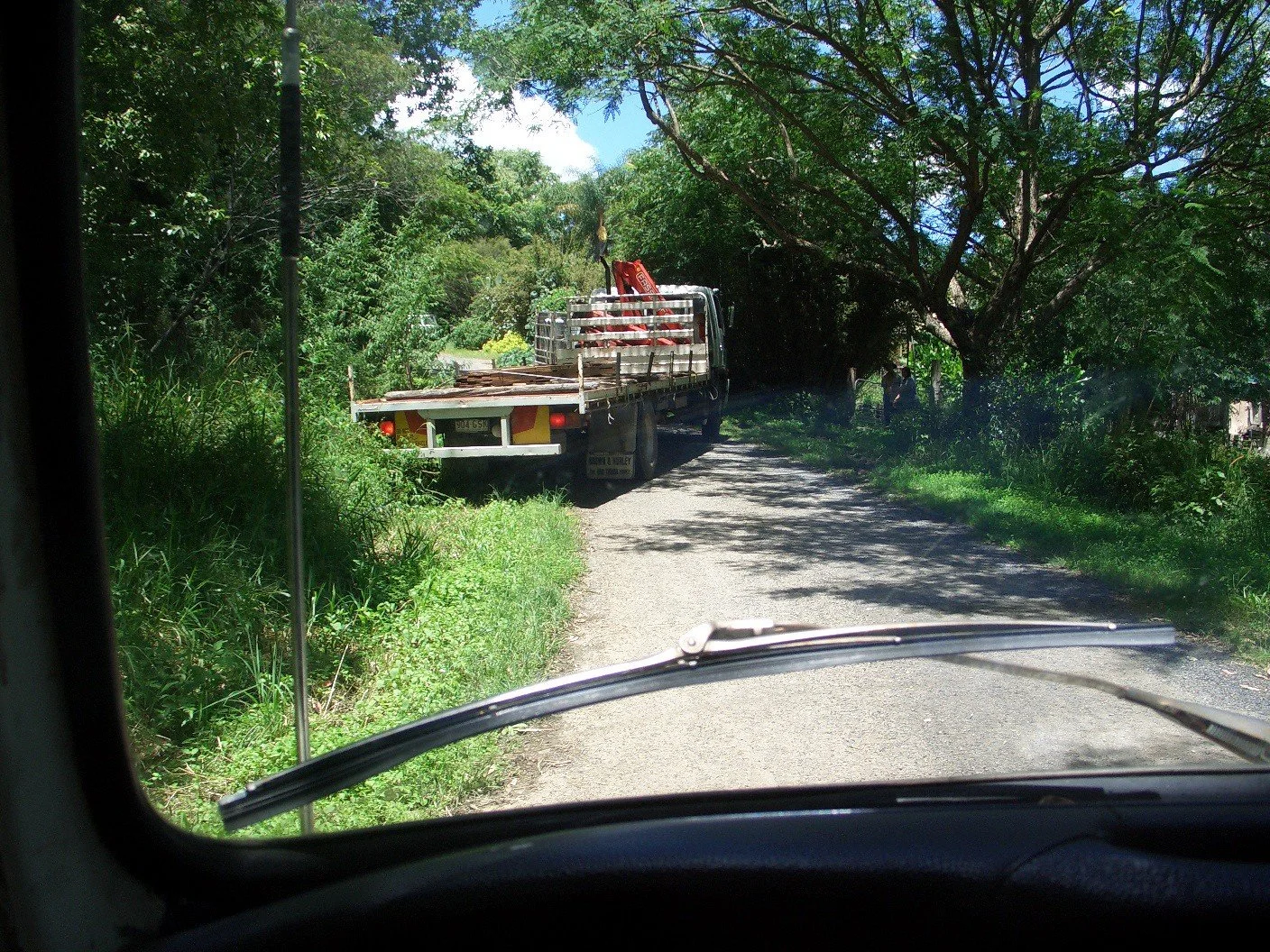From Australia to Peru, eco-villages offer sustainable living alternatives for people around the world.
Community garden at an eco-village in Haiti. Uusc4all. CC BY-NC-ND 2.0
As the climate crisis worsens, many are searching for ways to lead more sustainable lives. Some people have chosen to live in eco-villages, which are intentional communities designed to be environmentally sustainable.
1. Crystal Waters, Australia
Backroads captured during a tour of Crystal Waters. Recoverling. CC BY 2.0
Nestled within 640 acres of pristine bushland at the headwaters of the Mary River in Australia, Crystal Waters Permaculture Village stands as a beacon of sustainable living. Established in 1987, this community was the world's first intentional permaculture village and has since become a model for eco-friendly, low-impact living.
Permaculture is an agricultural system in which human activities cooperate with the environment to create self-sustaining systems. The community at Crystal Waters follows three core ethics of permaculture: caring for the earth, caring for people, and re-distributing all surpluses such as money and labor.
Today, Crystal Waters is home to more than 250 residents of diverse ages and backgrounds. The village comprises 83 privately owned plots, common lands, and cooperatively owned commercial properties designed with permaculture principles in mind. Community life at Crystal Waters is vibrant, with regular events including monthly concerts, markets and various courses ranging from permaculture to the arts.
2. Eco Truly Park, Peru
Eco Truly Park, Peru. Alex Proimos. CC BY-NC 2.0
Eco Truly Park is a vibrant ecological and artistic community on Chacra y Mar beach in the district of Aucallama, just an hour north of Lima, Peru. Founded on Vaisnava principles, this unique village emphasizes simple living, non-violence and elevated thinking. Traditional Indian teachings inspire much of the village’s architecture and values.
Eco Truly Park serves as Peru's first ecological educational center. Over the past 18 years, the community has transformed a previously barren, sandy land into a thriving hub of ecological awareness. Recognized as an important tourist destination, Eco Truly Park has welcomed more than 75,000 visitors, offering ecological lodging, beautiful gardens and a restaurant.
3. Auroville, India
The Matrimandir, Auroville, India. Olivier. CC BY-NC-ND 2.0
Auroville, also known as “The City of Dawn”, is an ambitious global township designed to house 50,000 inhabitants from around the world. Established in 1968, this visionary community currently hosts 3,300 residents of 60 different nationalities. At its heart lies the Matrimandir structure, known as the “soul of the city.”
Auroville is organized into four distinct zones: the Industrial Zone, the Cultural Zone, the Residential Zone and the International Zone. Each zone emphasizes a vital aspect of the town’s life, fostering a holistic approach to community living. The town is surrounded by a green belt of farms, forested areas and sanctuaries.
4. Tamera, Portugal
Landscape found in Tamera, Portugal. Laura Pazo. CC BY-NC-SA 2.0
Tamera is a community in Portugal rooted in research, education and outreach. Since Tamera was first established in 1978, the community has grown from a small group to about 160 people. The vision at Tamera is to create a nonviolent, regenerative society through the principles of Healing Biotopes.
Healing Biotopes are habitats where all life forms coexist in harmonious diversity. Tamera co-founder Dieter Duhm developed The Healing Biotopes Plan after decades of research into life’s potential for regeneration and healing. Those seeking to learn more about Tamera and Healing Biotopes can check out Tamera’s online educational resources.
5. Piracanga, Brazil
Beach along the Marau Peninsula near Piracanga, Brazil. Antonio Lordelo. CC BY-NC-ND 2.0
Piracanga is a Brazilian eco-village rooted in the pillars of nature, sustainability and self-knowledge. Amidst coconut trees and preserved biodiversity, residents and visitors alike are welcome to experience a lifestyle in harmony with nature.
Every action in Piracanga revolves around a deep respect for the natural world. Biodegradable products, composting, dry bathrooms, waste management and solar energy are just a few of Piracanga’s initiatives aimed at minimizing environmental impact. For those looking to learn more or visit Piracanga, the eco-village hosts a wide array of events throughout the year, including courses, retreats, activities and celebrations.
6. Torri Superiore, Italy
Torri Superiore, Italy. Andy Nelson. CC BY-NC 2.0
Founded in 1989, the Torri Superiore Cultural Association marks a successful mission to revive and transform a neglected medieval village into a vibrant eco-village. Located in Italy near the Mediterranean Sea and the French border, the medieval village of Torri Superiore is an architectural jewel dating back to the 13th century.
The Torri Superiore community, which began with a small group in 1993, now consists of about 20 permanent members who strive for sustainability and cultural enrichment. Common community activities include art events, celebrations and agricultural programs that include olive oil production in collaboration with local farmers and the small-scale growing of vegetables and fruit for personal consumption.
Madison Paulus
Madison is a student at George Washington University studying international affairs, journalism, mass communication, and Arabic. Born and raised in Seattle, Washington, Madison grew up in a creative, open-minded environment. With passions for human rights and social justice, Madison uses her writing skills to educate and advocate. In the future, Madison hopes to pursue a career in science communication or travel journalism.








